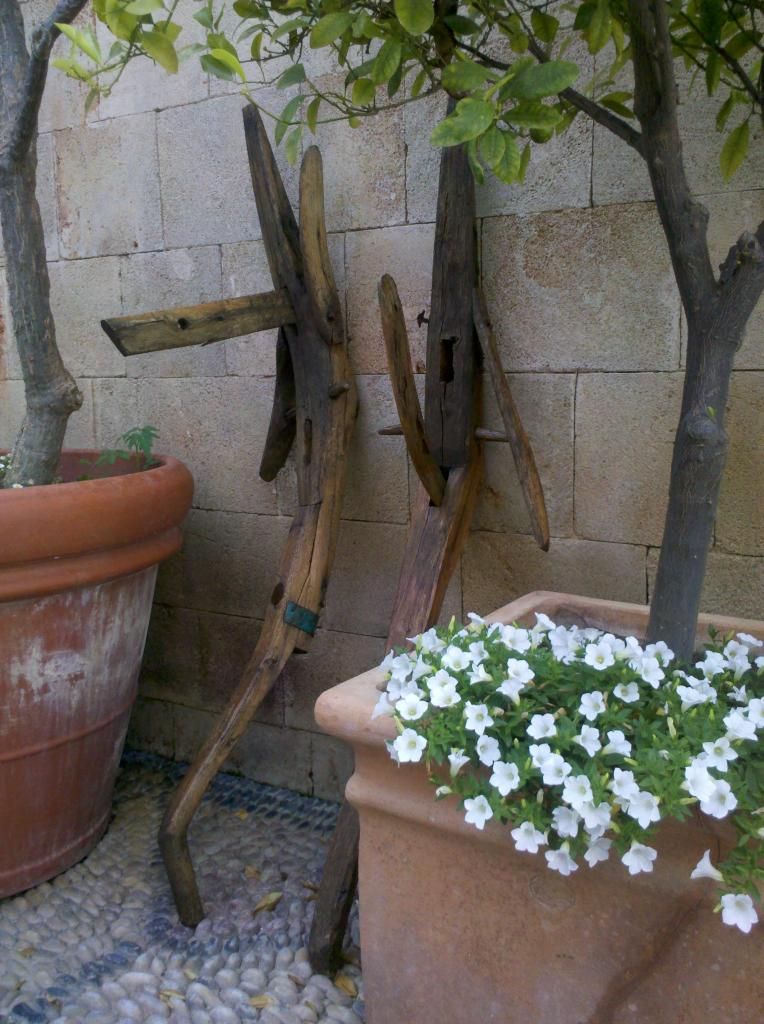Hi folks,
My wife and I just got back from a break in Rhodes and I thought some may be interested in old farming implements that were placed as features around the grounds of our hotel.
The owner, a Rhodes man, is a keen collector of all manner of artefacts, many of which he has simply taken from abandoned farms and houses in the immediate area, although many other items inside the rooms were from all around the Aegean.
My eyes must have been on stalks when I looked behind me as we sat on the roof terrace having a drink on our first night, and saw this...
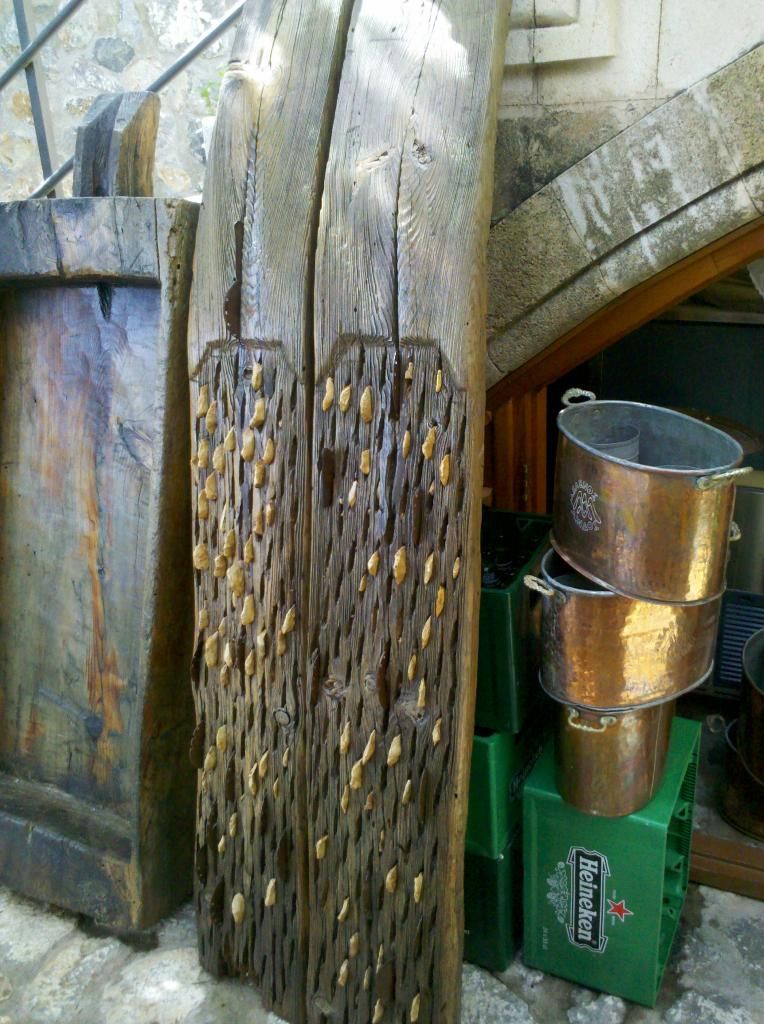
On asking, I was informed it was a seed harrow. After the seed is hand cast, the harrow would be drawn over by horse/donkey and the substantial weight of the board would firm the soil.
On the following day I photographed others standing here and there in the grounds...
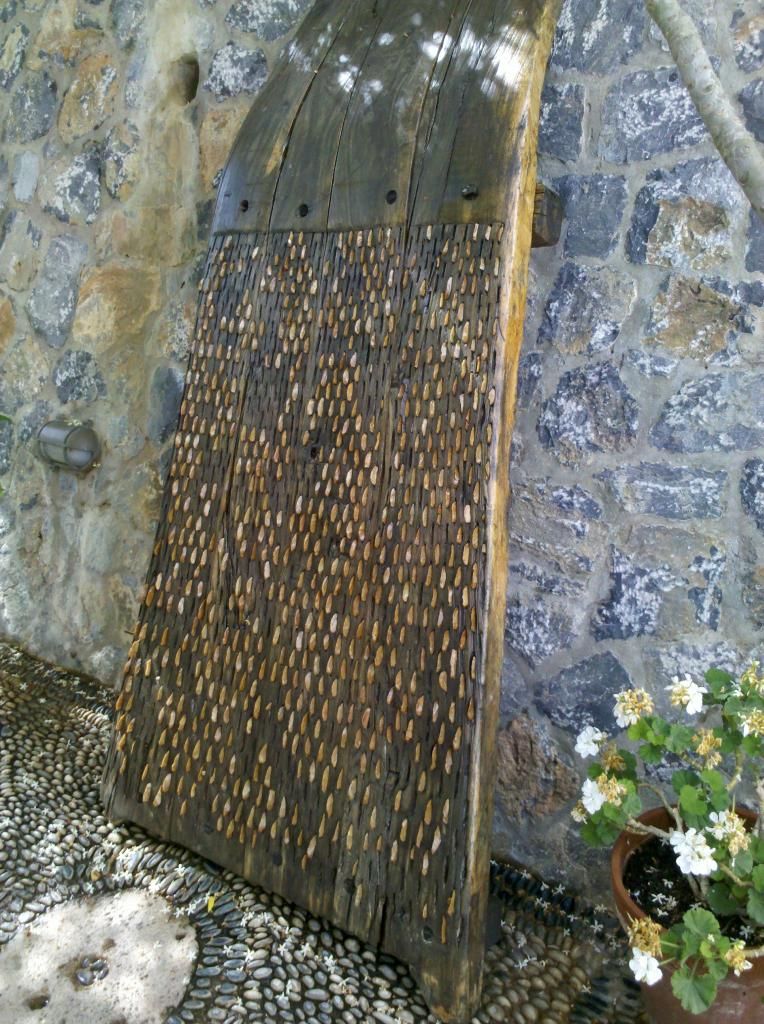
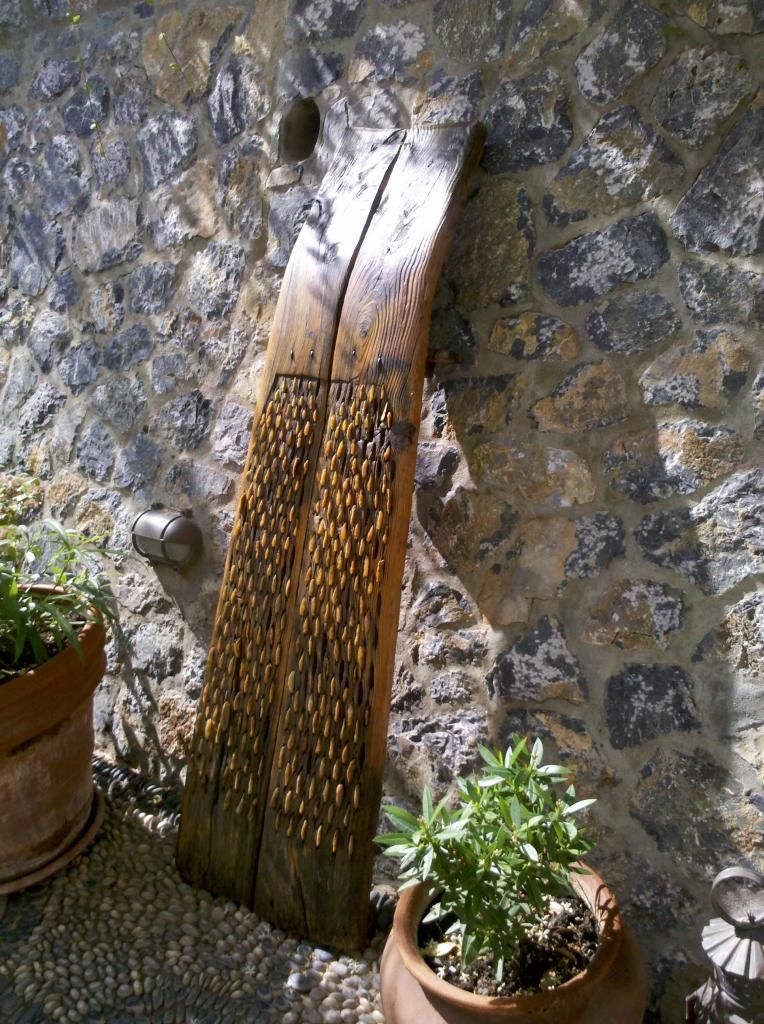
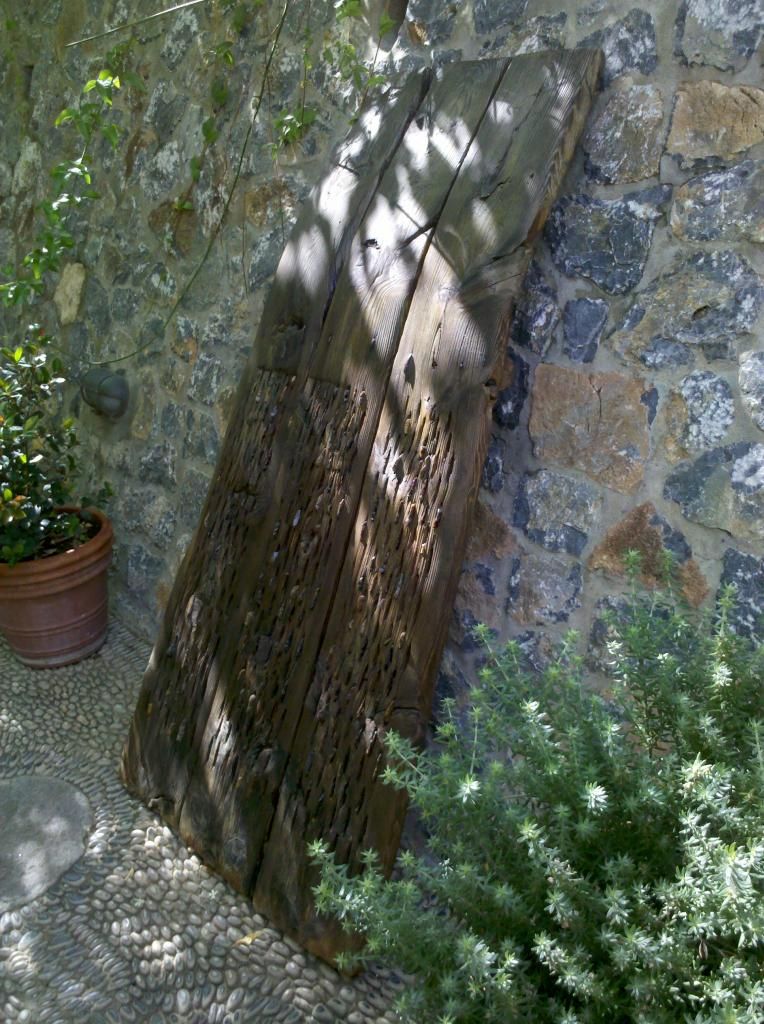
There are flints embedded into the wooden skids...
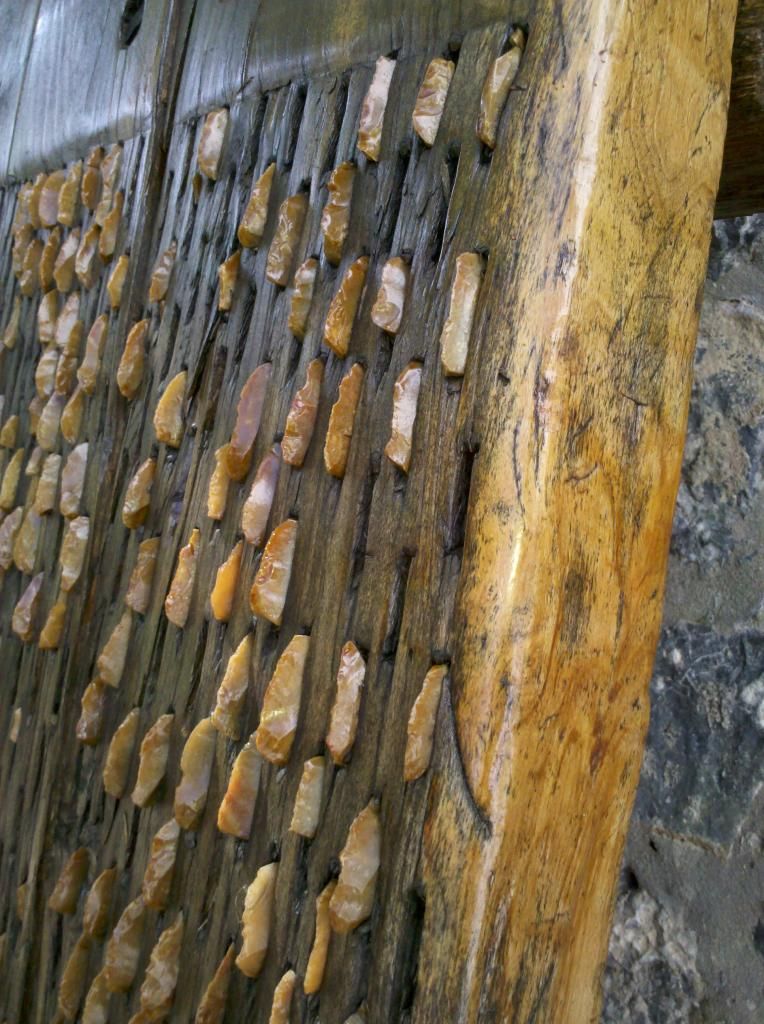
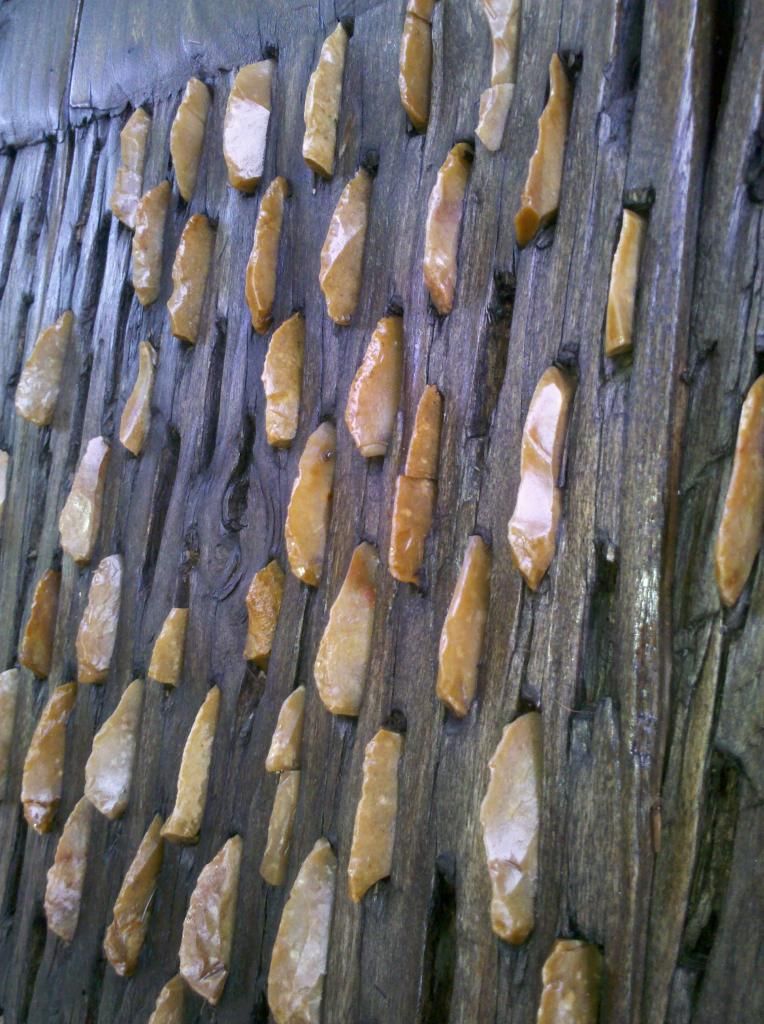
but the most poignant moment of all was on realising the link from Stone Age to Iron Age on seeing...
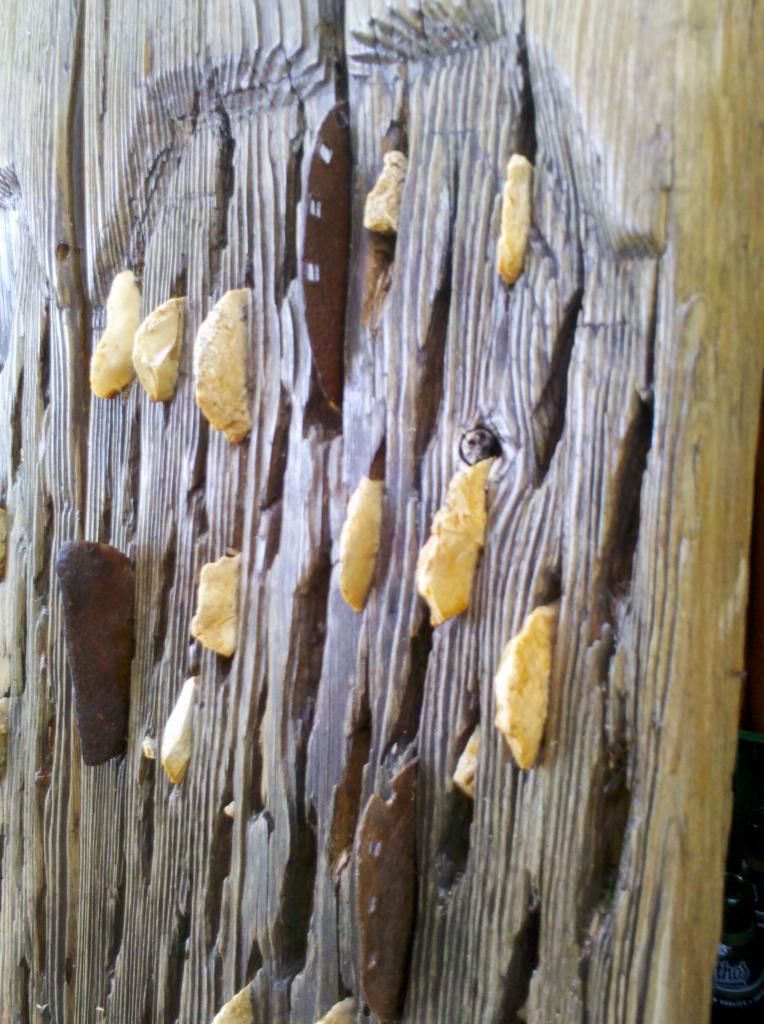
...that old donkey shoes had been hammered in to replace missing flints!
I'm still a bit gob-smacked at the thought of how old the technology must be!
My wife and I just got back from a break in Rhodes and I thought some may be interested in old farming implements that were placed as features around the grounds of our hotel.
The owner, a Rhodes man, is a keen collector of all manner of artefacts, many of which he has simply taken from abandoned farms and houses in the immediate area, although many other items inside the rooms were from all around the Aegean.
My eyes must have been on stalks when I looked behind me as we sat on the roof terrace having a drink on our first night, and saw this...

On asking, I was informed it was a seed harrow. After the seed is hand cast, the harrow would be drawn over by horse/donkey and the substantial weight of the board would firm the soil.
On the following day I photographed others standing here and there in the grounds...



There are flints embedded into the wooden skids...


but the most poignant moment of all was on realising the link from Stone Age to Iron Age on seeing...

...that old donkey shoes had been hammered in to replace missing flints!
I'm still a bit gob-smacked at the thought of how old the technology must be!

